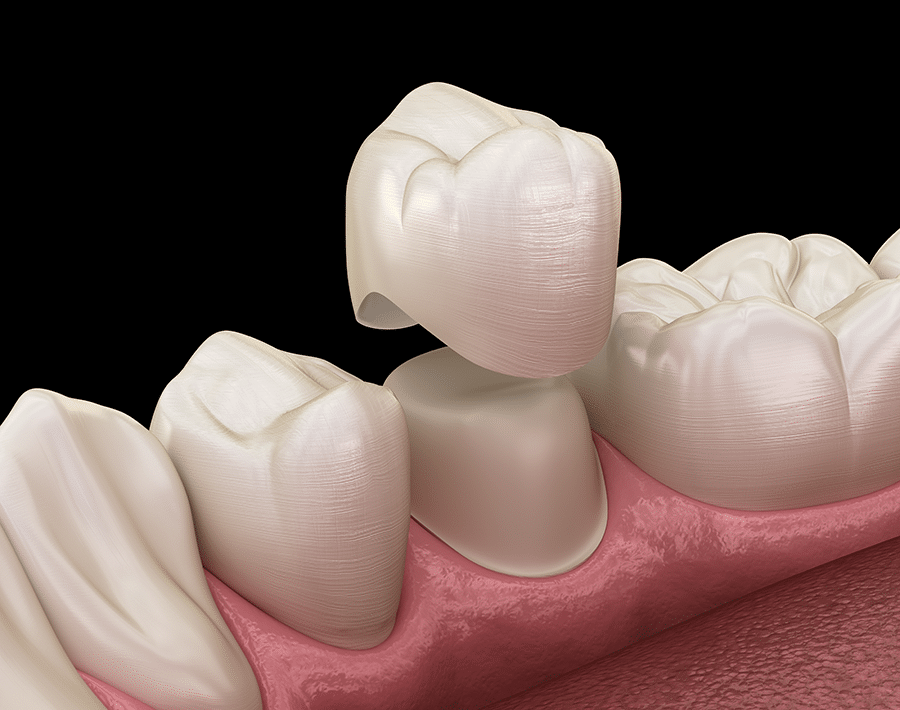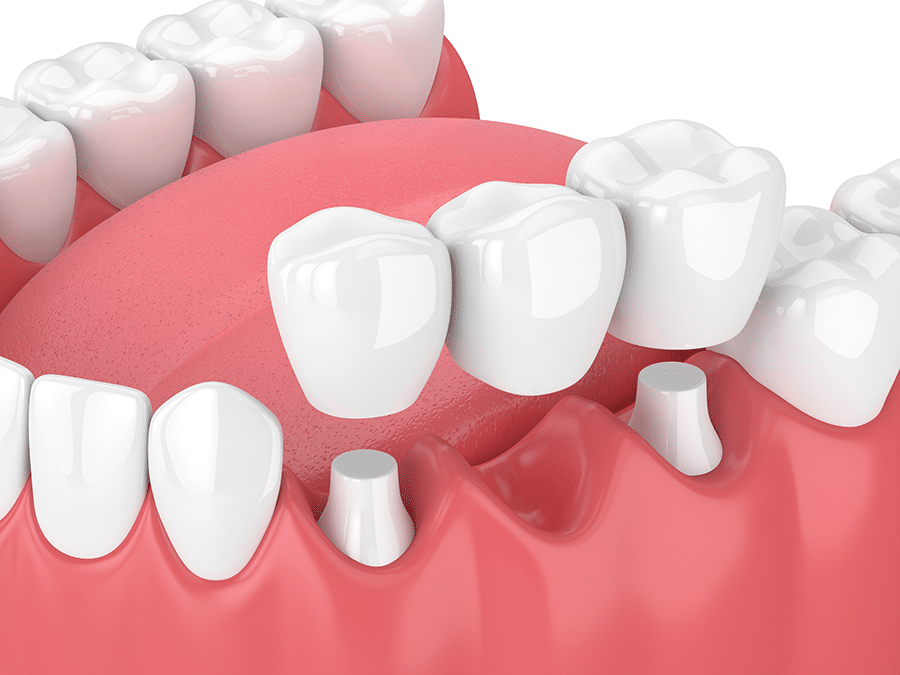
What Is a Dental Crown?
A crown is a restoration piece that covers teeth that have lost their structure due to damage or decay. Dental crowns are typically made of porcelain or ceramic and can be placed over the teeth to restore their shape and size. Crowns are used in multiple dental treatments, including:
- Dental implants
- Chipped, cracked, or fractured teeth
- Root canals
- Misshapen or discolored teeth
Dental crowns may also be used to attach dental bridges if your surrounding teeth don’t offer enough support.
How Do Crowns Work?
Our dentist, Dr. Mullaney, will prep the tooth with a dental anesthetic. She’ll then reshape the damaged tooth to ensure the dental crown fits comfortably. Once impressions are taken, she’ll fit you with a temporary crown while your final piece is constructed. When it arrives, Dr. Mullaney will cement your permanent crown in place.
Benefits of Dental Crowns
Protection is the main benefit of dental crowns. Your tooth’s sensitive nerves are vulnerable when its outer enamel is damaged. A dental crown replaces the enamel, relieving pain and restoring your tooth to its natural function and appearance.
Another advantage is that crowns are strong and durable. They’re also color-matched to the same shade as the rest of your teeth—so no one will notice the difference.
What Is a Dental Bridge?
A bridge is a fixed dental appliance that relies on your natural teeth for support. Similar to crowns, dental bridges restore appearance and function, allowing you to enjoy the foods you want. While bridges aren’t as permanent as crowns, they’re bonded to the surrounding teeth and can only be removed by a dentist.
Dental bridges are made of three components:
- Pontic – The replacement tooth. Bridges can have more than one, but four is usually the limit.
- Abutment – The base of the bridge that’s cemented to the teeth on both sides of the gap.
- Crown – Sits on top of the abutment and holds the bridge.
How Do Dental Bridges Work?
There are several ways to install dental bridges.
With traditional bridges, Dr. Mullaney will prepare your mouth by reshaping the teeth surrounding the gap to make room for the abutment crowns. She’ll take impressions and then fit you with a temporary bridge while your restoration is being created. At your next appointment, she’ll remove the temporary bridge, place the permanent one, and cement it.
Implant-supported bridges are another option. Missing teeth can weaken the mouth, but dental implants replace the whole tooth and can stimulate your jawbone, preventing bone loss. They also can last longer than traditional bridges.
With this type of bridge, either one implant is placed for every missing tooth, or the bridge is suspended between two dental implants.
Benefits of Dental Bridges
Crowns and bridges are designed to match your teeth’s color, shape, and overall texture. Other benefits of dental bridges include:
- Improves chewing and biting function
- Restores facial appearance, helping you look younger
- Prevents surrounding teeth from shifting


Dental Crowns and Bridges in Alexandria, VA
If you have damaged, discolored teeth or an old, broken restoration, a dental crown or bridge could be the perfect solution to restore your smile. Dr. Kathleen Mullaney, DDS, specializes in both restorative and cosmetic dentistry services in Alexandria, VA, ensuring your teeth look and function their best.




